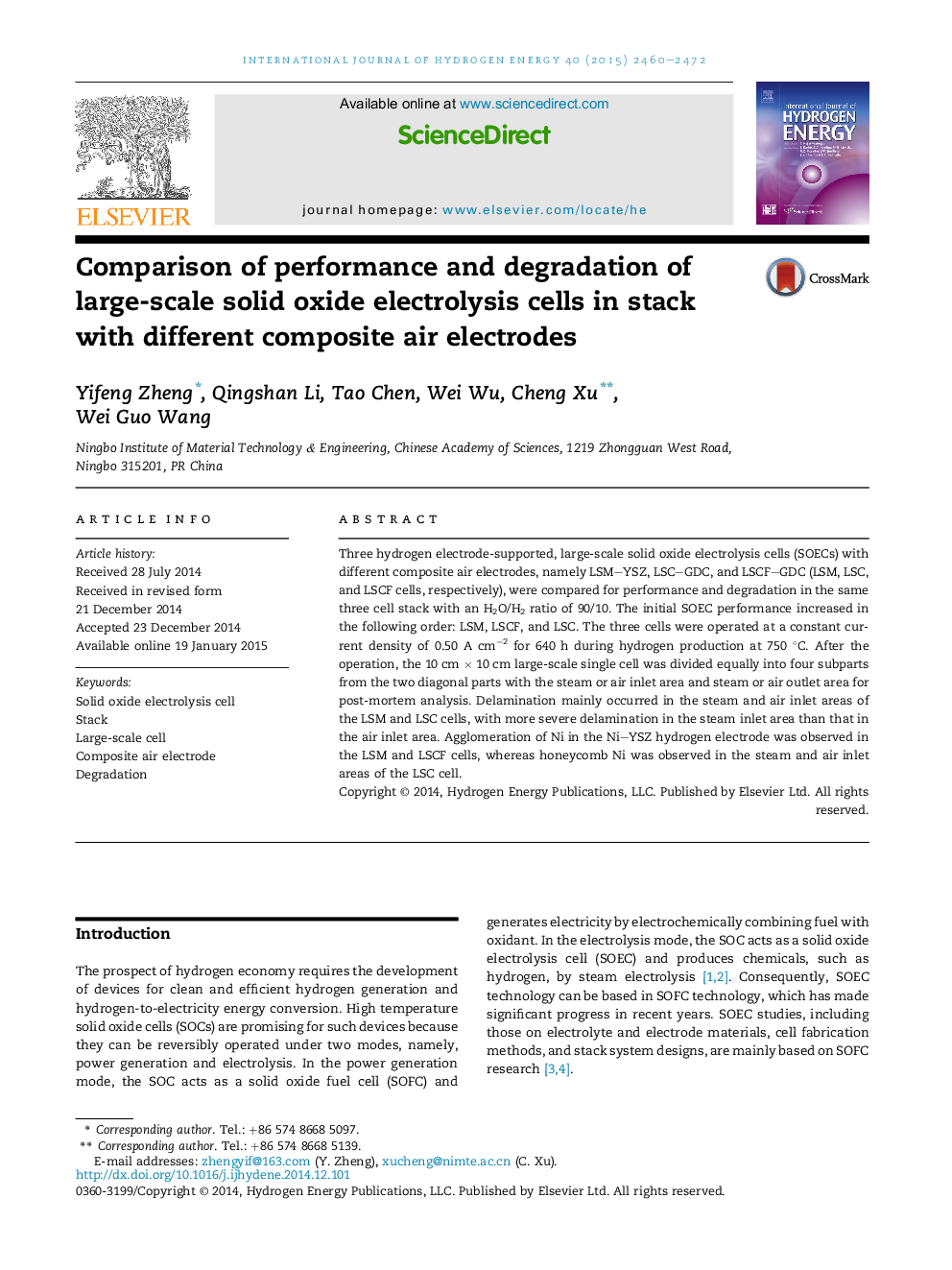| Article ID | Journal | Published Year | Pages | File Type |
|---|---|---|---|---|
| 1270012 | International Journal of Hydrogen Energy | 2015 | 13 Pages |
•Performance and degradation of three large-scale SOECs were compared.•Different single cells were assembled in the same stack.•The large-scale SOEC was divided equally into four subparts for post-mortem analysis.•Delamination occurred in the steam and air inlet areas of the LSM and LSC cells.•Honeycomb Ni was observed in the steam and air inlet areas of the LSC cell.
Three hydrogen electrode-supported, large-scale solid oxide electrolysis cells (SOECs) with different composite air electrodes, namely LSM–YSZ, LSC–GDC, and LSCF–GDC (LSM, LSC, and LSCF cells, respectively), were compared for performance and degradation in the same three cell stack with an H2O/H2 ratio of 90/10. The initial SOEC performance increased in the following order: LSM, LSCF, and LSC. The three cells were operated at a constant current density of 0.50 A cm−2 for 640 h during hydrogen production at 750 °C. After the operation, the 10 cm × 10 cm large-scale single cell was divided equally into four subparts from the two diagonal parts with the steam or air inlet area and steam or air outlet area for post-mortem analysis. Delamination mainly occurred in the steam and air inlet areas of the LSM and LSC cells, with more severe delamination in the steam inlet area than that in the air inlet area. Agglomeration of Ni in the Ni–YSZ hydrogen electrode was observed in the LSM and LSCF cells, whereas honeycomb Ni was observed in the steam and air inlet areas of the LSC cell.
